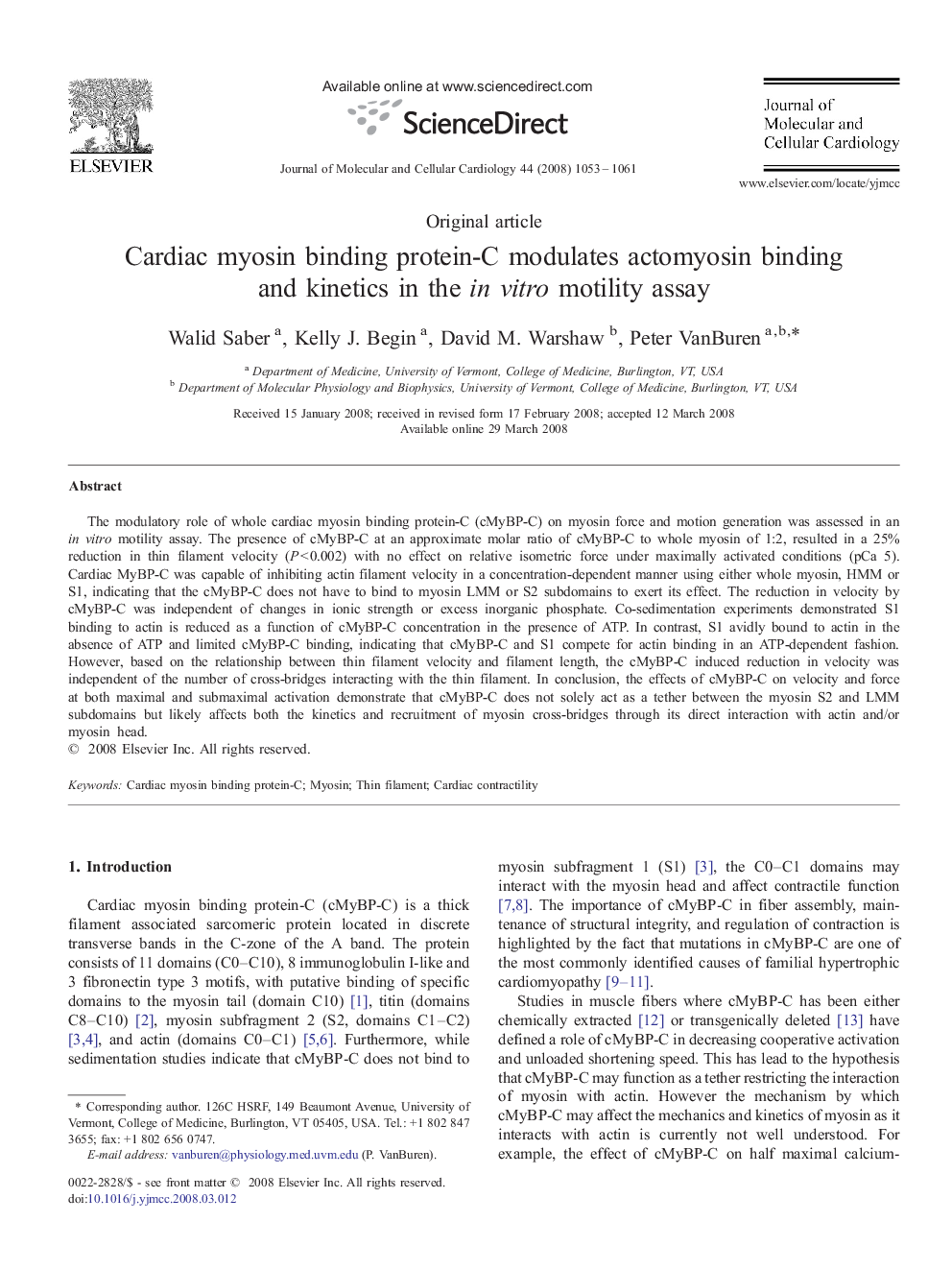| Article ID | Journal | Published Year | Pages | File Type |
|---|---|---|---|---|
| 2191884 | Journal of Molecular and Cellular Cardiology | 2008 | 9 Pages |
The modulatory role of whole cardiac myosin binding protein-C (cMyBP-C) on myosin force and motion generation was assessed in an in vitro motility assay. The presence of cMyBP-C at an approximate molar ratio of cMyBP-C to whole myosin of 1:2, resulted in a 25% reduction in thin filament velocity (P < 0.002) with no effect on relative isometric force under maximally activated conditions (pCa 5). Cardiac MyBP-C was capable of inhibiting actin filament velocity in a concentration-dependent manner using either whole myosin, HMM or S1, indicating that the cMyBP-C does not have to bind to myosin LMM or S2 subdomains to exert its effect. The reduction in velocity by cMyBP-C was independent of changes in ionic strength or excess inorganic phosphate. Co-sedimentation experiments demonstrated S1 binding to actin is reduced as a function of cMyBP-C concentration in the presence of ATP. In contrast, S1 avidly bound to actin in the absence of ATP and limited cMyBP-C binding, indicating that cMyBP-C and S1 compete for actin binding in an ATP-dependent fashion. However, based on the relationship between thin filament velocity and filament length, the cMyBP-C induced reduction in velocity was independent of the number of cross-bridges interacting with the thin filament. In conclusion, the effects of cMyBP-C on velocity and force at both maximal and submaximal activation demonstrate that cMyBP-C does not solely act as a tether between the myosin S2 and LMM subdomains but likely affects both the kinetics and recruitment of myosin cross-bridges through its direct interaction with actin and/or myosin head.
